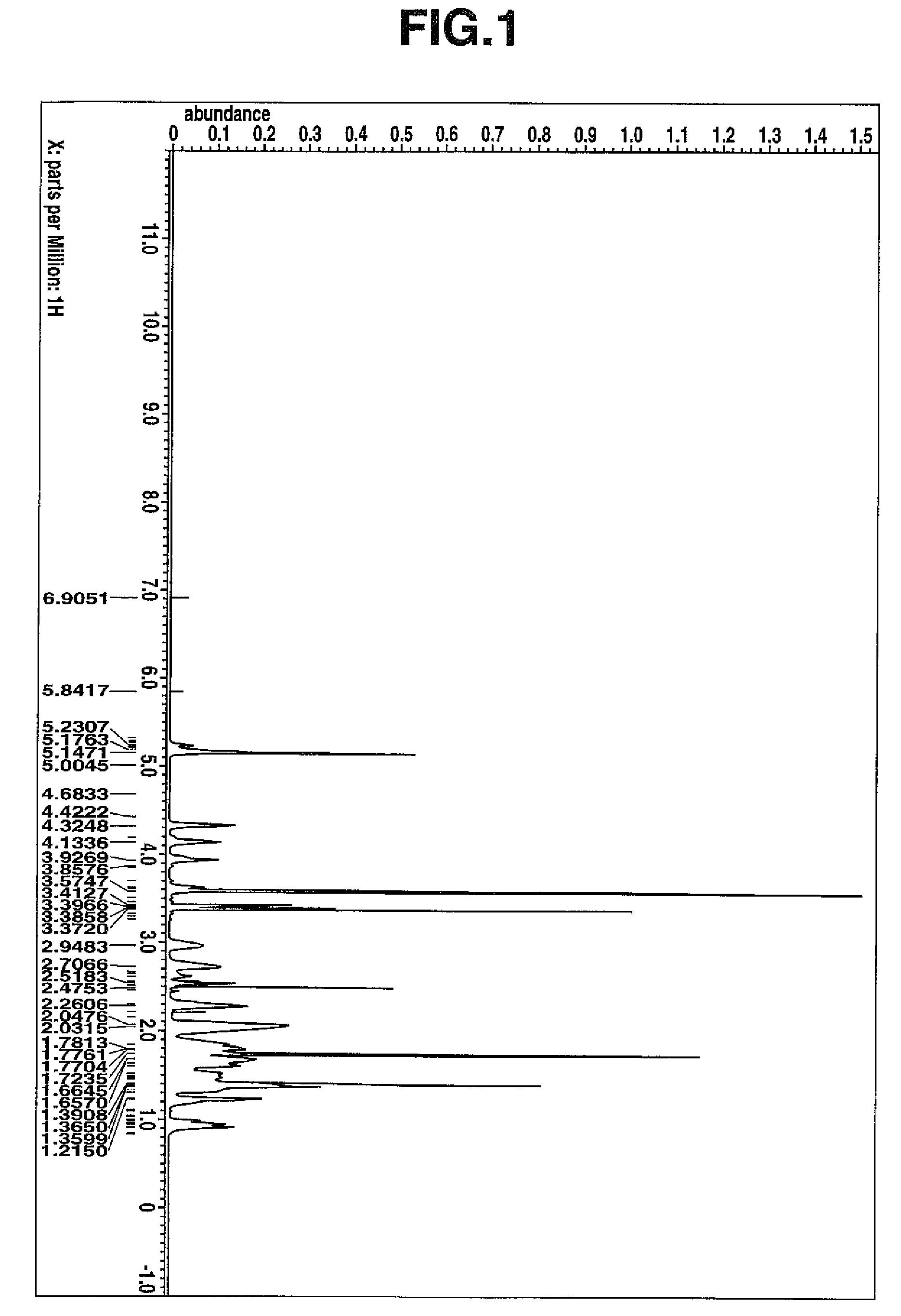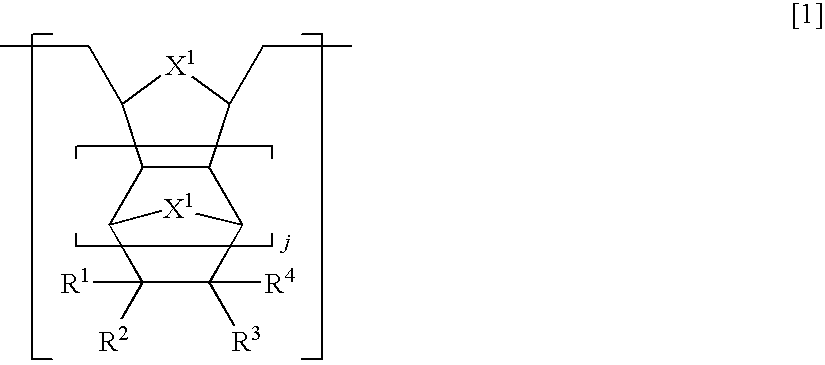Hydrogenated ring-opening metathesis polymer, resist composition and patterning process
a metathesis polymer and resist technology, applied in the direction of photomechanical equipment, instruments, photosensitive materials, etc., can solve the problems of dry etching resistance, insufficient etching resistance of derivatives, and difficult application to photolithography, etc., to achieve the effect of improving etching resistance and improving development properties
- Summary
- Abstract
- Description
- Claims
- Application Information
AI Technical Summary
Benefits of technology
Problems solved by technology
Method used
Image
Examples
example
[0350]Examples are given below by way of illustration and not by way of limitation. The abbreviation Me stands for methyl, Pri for isopropyl, and Ph for phenyl.
example 1
Synthesis of Polymer 1
[0356]In a 500-ml autoclave, 27.81 g of 8-(methoxymethyloxycarbonyl)-tetracyclo[4.4.0.12,5.17,10]-3-dodecene and 17.04 g of 4,10-dioxatricyclo[5.2.1.02,6]dec-8-en-3-one as cyclic olefin monomers were dissolved in 250 ml of tetrahydrofuran (THF). To the solution were added 1.25 g of 1,5-hexadiene and 343 mg of Mo(N-2,6-Pri2C6H3)(CHCMe2Ph)(OCMe(CF3)2)2 as a polymerization catalyst. Reaction was effected for 2 hours at 50° C. Thereafter, 100 mg of butyraldehyde was added to the reaction mixture, which was stirred for 30 minutes to stop the reaction. The ring-opening metathesis polymer solution was poured into methanol for precipitation. Subsequent filtration, methanol washing and vacuum drying yielded 43.7 g of a ring-opening metathesis polymer powder.
[0357]Thereafter, in a 500-ml autoclave, 40.0 g of the ring-opening metathesis polymer powder was dissolved in 200 ml of THF. A previously prepared solution of 40 mg of chlorohydridocarbonyltris(triphenylphosphine)ru...
example 2
Synthesis of Polymer 2
[0358]Ring-opening metathesis polymerization was effected as in Example 1 except that some reactants were changed to 34.10 g of 8-(2,2-dimethylpropyloxymethyloxycarbonyl)-tetracyclo-[4.4.0.12,5.17,10]-3-dodecene and 17.04 g of 4,10-dioxatricyclo-[5.2.1.02,6]dec-8-en-3-one as cyclic olefin monomers, 2.53 g of 1,6-heptadiene, and 269 mg of Mo(N-2,6-Me2C6H3)(CHCMe2Ph)-(OCMe2(CF3))2 as a polymerization catalyst. There was yielded 50.8 g of a ring-opening metathesis polymer powder.
[0359]As in Example 1, hydrogenation reaction was effected on 40.0 g of the ring-opening metathesis polymer powder, yielding 38.9 g of a hydrogenated ring-opening metathesis polymer in white powder form. On 1H-NMR analysis of the resulting hydrogenated ring-opening metathesis polymer, no peak attributable to the proton on the backbone olefin was observed, indicating a percent hydrogenation of 100%. On GPC analysis, the polymer had a weight average molecular weight Mw of 8,400 and a Mw / Mn o...
PUM
| Property | Measurement | Unit |
|---|---|---|
| transparency | aaaaa | aaaaa |
| mol % | aaaaa | aaaaa |
| thickness | aaaaa | aaaaa |
Abstract
Description
Claims
Application Information
 Login to View More
Login to View More - R&D
- Intellectual Property
- Life Sciences
- Materials
- Tech Scout
- Unparalleled Data Quality
- Higher Quality Content
- 60% Fewer Hallucinations
Browse by: Latest US Patents, China's latest patents, Technical Efficacy Thesaurus, Application Domain, Technology Topic, Popular Technical Reports.
© 2025 PatSnap. All rights reserved.Legal|Privacy policy|Modern Slavery Act Transparency Statement|Sitemap|About US| Contact US: help@patsnap.com



